MARKETING
A Brand’s Guide for 2023
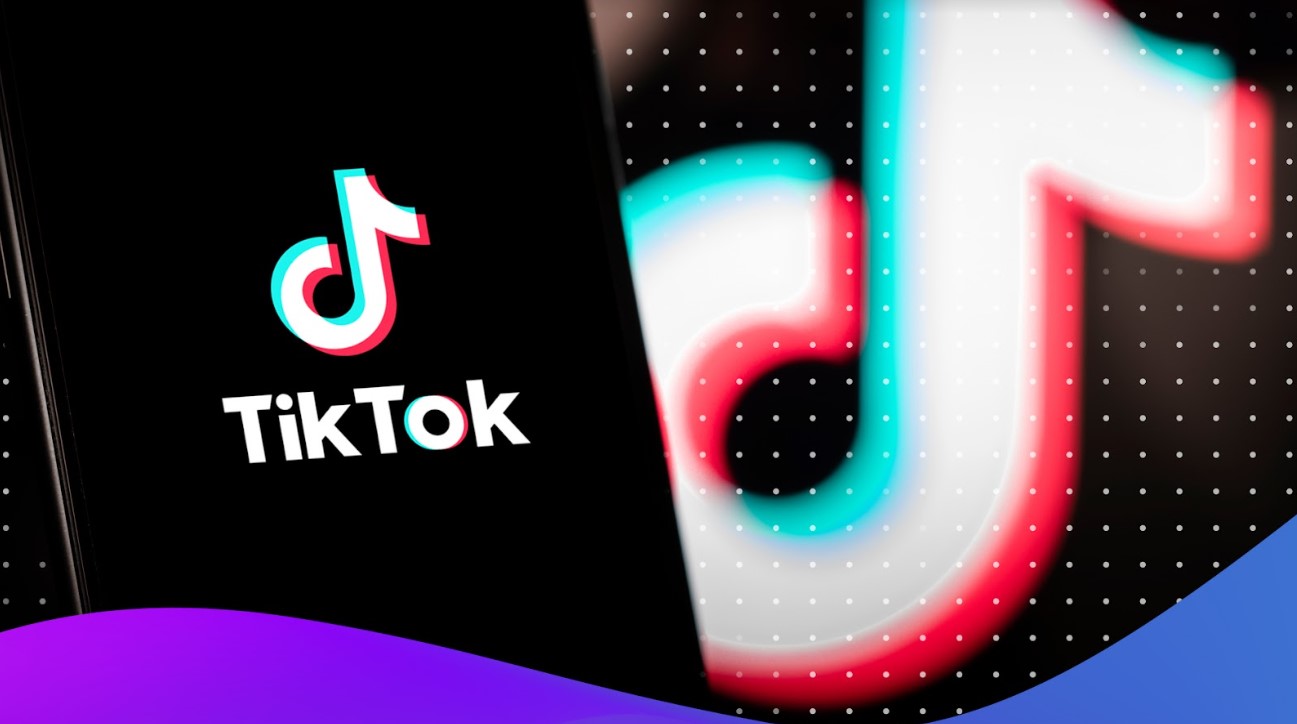
If you’ve been caught up in a goofy dance challenge, know what a negroni sbagliato is, or recently rediscovered your love for corn, you probably have TikTok to thank (or blame?) for it. Despite proposed and actual restrictions in the US, TikTok was the most downloaded app in the world last year and has woven itself into the very center of pop culture.
Contrary to its early reputation as the former Musical.ly and the spiritual heir to Vine, TikTok isn’t just for teens. Its 1 billion monthly active users span all demographics, with 35-64-year-olds among the fastest-growing age groups (though Gen Z is still dominant on the platform). This makes it a vital advertising marketplace for companies across industries and sectors. And as the first US Independent Agency to receive the TikTok Campaign Management Agency Partner badge, Tinuiti knows a thing or two about how to help brands create engaging and successful TikTok advertising and marketing campaigns.
Here’s a look at how to advertise on TikTok, some of the platform’s key features and best practices, and how you can get started with TikTok ads.
“TikTok is the #1 downloaded platform across mobile. It’s no longer the best-kept secret for advertisers, but the platform is spreading its wings against wider demographics, and we expect this to continue.”
– Avi Ben-Zvi, VP of Social at Tinuiti
Table of Contents
- How does TikTok work?
- Is TikTok’s audience a good fit for your brand?
- TikTok Ad Types for Your Campaigns
- How to Start Advertising on TikTok: Step-by-Step
- How Much Do TikTok Ads Cost?
- 7 Creative Best Practices for Your TikTok Advertising Initiative
- 6 Successful TikTok Ad Campaign Examples
- Final Takeaway
How does TikTok work?
TikTok is a channel designed for short-form video content. Users can choose from thousands of audio clips and record videos of themselves lip-syncing, dancing, or acting along to the sound bites. Videos can also be edited, sped up, or slowed down, and users can add stickers, activate a special effect, or use filters to change the video’s look. When you log in, a recommended video on your For You Page (FYP) will start playing right away, as determined by the TikTok algorithm.
You can also follow other users to stay up to date on their content or use the search function to look up specific challenges, keywords, hashtags, and more. There’s also a trending area to find up-and-coming videos.
The TikTok app isn’t just for individual users, though. Companies use TikTok ads to boost their brand awareness, promote new products or sell directly to TikTok users. But to advertise on TikTok effectively, brands must understand the platform’s audience, ad formats and the process of creating a TikTok ad that will resonate.
“What I love most about working on this platform is how advertisers are rewarded for enhancing the user experience rather than disrupting it. We see much stronger engagement and touchpoints to purchases when we embrace TikTok trends and the native content experience that the consumer leads,” said Haley Kimmen, Senior Specialist, Paid Social at Tinuiti.
Is TikTok’s Audience a Good Fit for Your Brand?
TikTok, in some version or another, is currently available in 150 markets worldwide and 75 unique languages. Its most popular posters have millions of followers and billions of views per month.
TikTok has become popular with all age groups. Though teens were the original cohort to catch on, TikTok videos are now a part of the mainstream social media diet for people worldwide, including 138 million Americans from all walks of life.
Interesting Statistics About TikTok’s Audiences, Reach and Impact
TikTok has extraordinary potential to reach young people while they’re highly engaged. We’ll let these statistics speak for themselves:
- Of TikTok’s 1 billion monthly active users (MAUs) across the globe, over 63% of users in the US are between the ages of 10 and 29, and nearly 60% are female.
- TikTok (37.3 million) recently surpassed Instagram (33.3 million) in popularity among Gen Z users.
- TikTok has the second-most engaged user base when compared to its competitors, with 29 percent of its active worldwide users opening the app every single day each month in Q2 2022 and spending nearly 1.5 hours per session when they do.
- For brands, TikTok is one of the fastest-growing channels for product discovery. According to TikTok’s research, nearly 15% of product discoveries began on TikTok in 2022, up from 4% in 2021.
- Some retail brands estimate that advertising and marketing on TikTok is responsible for 30% to 40% of their offline sales lift.
- TikTok is expanding into social commerce at a rapid pace, including partnering with Shopify to make purchasing via the platform more seamless.
Given that reach and impact, it’s hard to think of a brand for which TikTok’s audience isn’t a good fit. To borrow a phrase popular on the app, TikTok can offer a huge W for marketers if their content aligns with what users are looking for.
TikTok Ad Types for Your Campaigns
Today, TikTok offers a variety of robust ad types ranging from simple in-feed ads to complex video shopping ads. Let’s dive into how each type of ad works and what your brand may need to get started.
In-Feed Ads
As the name suggests, in-feed ads appear in the feed as part of the FYP video queue and redirect to your website or app. Each in-feed ad video can be 5 to 60 seconds long, and a profile photo, brand name, and text description accompany each video. Users can also interact with these ads, liking or sharing them or leaving comments. Each in-stream video ad can use one of three available action models: CPC (cost per click), CPM (cost per mille), and CPV (cost per view). To count for CPV, a user has to watch your ad for more than 6 seconds.
Spark Ads
Spark Ads enable brands to leverage existing organic videos that align with their campaign aims by amplifying them. Spark Ads use posts from real TikTok accounts (either the brand’s or another creator’s, used with permission), which ensures that all views, comments, shares, likes, and follows gained from boosting the video during the promotion are attributed to the organic posts.
Search Ads
In 2022, TikTok began testing search ads or sponsored in-feed or spark ads that appear in the first few search page results. This allows brands to toggle on search placements for existing campaigns, helping them target users with high interest or purchase intent. However, this placement isn’t available to the general public yet. For now, you’ll need to work with one of TikTok’s marketing partners (like Tinuiti!) to run these ads.
Brand Takeover
A brand takeover is when your ad appears immediately after a user opens the app, “taking over” the opening screen. Once opened, the brand can bring users somewhere else, whether it’s a TikTok profile or an external site.
Source: TikTok
This TikTok ad type has a high barrier to entry, as it’s more expensive than in-feed or spark ads, and the fact that only one advertiser can leverage this ad per day.
TopView Ads
Similar to Brand Takeover, this ad appears when the app is opened. However, TopView allows videos such as In-Feed Video to be used as advertising material.
Branded Hashtag Challenge
TikTok’s user-generated content is unique, clever, and remarkably shareable, and the Hashtag Challenge ad format takes full advantage of this. Users are asked to participate in a challenge campaign that will last for six days, where they post their own videos based on the suggested theme. This is an easy way to make your brand go viral if you leverage your ad creative correctly.
TikTok also offers a subset of the Hashtag Challenge called Hashtag Challenge Plus, which allows users to shop for products featured in a Hashtag Challenge without leaving the app. This will help your Hashtag Challenge generate sales and brand awareness at the same time.
“TikTok hashtag challenges leverage a user’s tendency to create and share content around unified themes. Brands can build affinity by turning users into co-creators. TikTok understands the ripple effect one challenge can have, so incorporating brands elevates the idea even more!”
— Kiana Corpus, Senior Digital Marketing Specialist at Tinuiti
Branded Effects
Brands can create sponsored augmented reality effects, filters, lenses or stickers that users are free to use on their own organic content. A product or logo is often incorporated into these effects, meaning your brand will appear on each video, encouraging users to interact. If your branded effects add enough value to user’s posts, you can expect to see your brand featured in troves of user generated content.
Video Shopping Ads
In the beginning of 2023, TikTok retired Dynamic Showcase Ads and Collection Ads, and reincorporated them into a new format called Video Shopping Ads. This ad type requires brands to create a catalog within TikTok and populate it with products, allowing users to shop and purchase within the ad itself. This also allows brands to automatically retarget people with products according to their online behaviors.
User-Generated Content
Getting your audience to post videos of them interacting with your brand or product will go a long way to making your branding goals a reality. You can encourage this through your profile and videos or partner with influencers with a large following that may fit your target audience. Many brands have had success with this through “unboxings” or “hauls,” where a user explains, tries on or demonstrates a variety of items bought from or provided by a single brand.
Influencer Marketing
Just like other platforms, influencer marketing is a powerful tool. As long as there are influencers with a following similar to your target audience, you can partner with them to create content promoting your brand to the right users.
You’ll have to choose the right influencers and communicate effectively for influencer campaigns to be successful. They need to maintain their personal style and be trusted to make content that appears authentic to their followers.
How to Start Advertising on TikTok: Step-by-Step
Setting up your TikTok advertising campaign and running TikTok ads is a straightforward process that allows advertisers plenty of options for reaching their desired audience and driving engagement. Here’s a step-by-step guide to setting up a TikTok advertising campaign.
1. Start a TikTok Ad Account
To get started, create a user account through the TikTok for Business website by clicking “create an ad.” Then, submit the following information to TikTok:
- A business name that matches the information you supply TikTok
- A link to your business’s website that displays product or service information
- Additional business information, such as your industry, street address, state/province, postal code, and contact information
- Tax and payment information
- Assurance that you’re not promoting prohibited products or services
After verifying the account and agreeing to TikTok’s terms of service, a TikTok ad campaign can be created.
For some campaigns, brands may benefit from setting up a TikTok pixel on their owned platforms. The pixel is a small piece of code that you place on your website to help you track visitor actions, like page views or purchases, and create audience segments to re-engage previous site visitors or model lookalikes to find new customers. TikTok’s tracking pixel is also key if you’d like to run conversion-focused campaigns.
2. Create a TikTok Ad Campaign
Once you have an account, you can begin to build a campaign. Choose “Campaign” from the top tab of the TikTok Ad Manager to start the process. Then select “Create,” and provide details regarding your objectives and budget. Let’s take a closer look:
Setting Objectives
As the first step in the campaign creation process, you’ll be prompted to choose from three objectives: Awareness, Consideration, or Conversion. Awareness will maximize the number of TikTok users who see your ad, helping new brands develop brand awareness. TikTok’s metric for this is Reach. Consideration is better for established brands, as it encourages users to seek more information and cultivates interest in their offerings. TikTok offers five sub-objectives to Consideration, including:
- Traffic: drives users to a specific URL
- App Installs: encourages users to download your app
- Video Views: gets more users to view your video content
- Lead Generation: collects contact information from potential clients
- Community Interaction: getts more users to interact with your brand’s TikTok account
Conversion is designed to help organizations improve sales through their TikTok ads and requires brands to install a tracking pixel on their owned properties. Once a pixel is in place, brands can choose from one of three sub-objectives:
- Product Sales: encourages sales of products from your TikTok catalog, website or app
- Website Conversions: encourages users to take specific actions on your website, like adding items to a cart or completing a registration form.
- App Promotion: drives new app downloads or existing user log-ins
The right objective for your brand will depend on your internal business goals and what your team hopes to gain from advertising on TikTok.
Setting a Budget
When setting up the budget for an ad campaign, there are three choices: No Limit, Daily budget and Lifetime budget. No Limit is essentially an unlimited ad budget; the Daily and Lifetime budgets are the maximum amounts set to be spent daily or on an entire campaign. If you’d like to target your budget on a more granular level, you can set a Daily or Lifetime budget for specific ad groups, too.
Keep in mind that TikTok ads have a minimum budget requirement depending on the user’s choices. The minimum for both daily and lifetime budgets is 50 USD, but ad groups can run on a daily minimum of 20 USD.
3. Create an Ad Group & Choose Placements
After setting a budget for the campaign, the TikTok Ad Manager guides you through creating ad groups. Each campaign can contain one or more ad groups. Ad groups consist of:
- Placements
- Creative Type
- Target Audience
- Budget & Schedule
- Bidding Method & Optimization
The first set of choices to make is about ad placement. Advertisers can choose to advertise directly on the TikTok app, or place ads on one of TikTok’s affiliated properties. These include BuzzVideo, TopBuzz and Babe, for example. TikTok also offers a feature allowing the app to choose ad placement on its own, running ads where they would likely perform better.
4. Identifying Your Target Audience
Every campaign and ad group has a particular customer or set of customers in mind, and the app allows the advertiser to target specifically based on specific characteristics. Typical demographic options available include:
- Age
- Gender
- Language
- Location
Advertisers can also target their audience by what devices they use and their interests. For more specific targeting and retargeting, TikTok allows advertisers to upload the IDs of existing TikTok users from previous engagement through ZIP, CSV, and TXT files.
TikTok also provides advanced targeting options that dynamically optimize target audiences to lower cost or maximize conversions (Automatic targeting), automatically expand the target audience if the selected targets are predicted to be too hard to reach (Targeting expansion) or recommend interests and behaviors to include in the ad group (Targeting recommendations).
5. Finalize Campaign Details
The final step before pushing your ad live is to set your campaign’s bidding strategy and optimization goal. Optimization goals are straightforward. You can optimize your campaign for conversions, clicks or reach, and depending on the objective you set when creating your campaign, your optimization setting may be preset by default.
The bidding strategy on TikTok is similar to other social media platforms. Here’s a quick overview:
- Bid Cap: Brands enter the maximum cost per result based on their chosen objective or billing event. Then, TikTok will deliver ads that do not exceed your desired cost.
- Cost Cap: Advertisers can set an average cost per result they’d like to spend for a given objective. This acts as a more flexible version of bid cap, since costs may be higher or lower than your desired bid.
- Lowest Cost: Instead of setting a bid, this option will place your ad as often as possible at the lowest feasible cost. While this is great for maximizing reach, it may result in a high cost per action depending on your target audience.
Whichever bidding strategy you select, you can choose either standard or accelerated delivery. Standard delivery means your ad budget will be spent evenly during the scheduled campaign time. Accelerated means your budget will be spent as quickly as possible, and your ad will be exposed to your target audience in the shortest time frame.
6. Create and Ship Your Ads
Now for the fun part – creating your ad. First, choose a video or spark ad (or if you’ve selected TikTok’s affiliated regional feeds for placement, image ads are also an option). For video ads, simply add your photos or video, or create a video within the Ads Manager using the variety of video creation tools TikTok makes available. For spark ads, you’ll have to contact the creator whose content you want to leverage, and TikTok has a mechanism for doing that.
TikTok will review each ad to ensure it complies with its guidelines, including the caption or text, images or visual content, audio content and the targeted region and age group. You’ll be prompted to upload or create a thumbnail and to insert any relevant links, and you’ll be able to preview your ad before submitting it for approval. Once approved, your ad will ship according to the schedule and volume dictated by your campaign set-up and budget.
7. Increase Visibility with TikTok Promote
Dedicated ads aren’t the only videos TikTok can amplify for a fee. You can also boost your brand’s existing organic TikTok content to a broader or more relevant audience using TikTok Promote, similar to how you can boost organic content on other social media platforms.
Here’s how to use TikTok Promote:
- Find Creator tools on your TikTok profile under settings
- Select Promote
- Choose the video you’d like to promote
- Pick an objective: More views, more web visits, or more followers
- Select your audience, budget, and the amount of time you’d like your video promoted
- Enter your payment information
- Select “Start Promotion”
TikTok Promote can help drive traffic to your website, reach more TikTok users, or accelerate your conversion rate. If your brand is already active on TikTok, the Promote feature is like a shortcut through the ad-building process. You’re using your own content as a Spark ad.
8. Continuously Measure and Optimize Ad Performance
As with all social media advertising strategies, it’s absolutely crucial to test, measure and iterate your TikTok ads to optimize performance. The TikTok Ad Manager provides many tools to help you track key metrics like views, interactions and click-through rates, and the TikTok pixel will help you track off-platform activity. Adjust your content strategy if you’re not seeing the engagement and results you expect.
How Much Do TikTok Ads Cost?
Because of the bidding and budget process, the cost of any individual TikTok ad or campaign will vary. However, there are minimum budgets at the campaign and ad group levels. For campaigns, the minimum daily budget and lifetime budget are $50. For ad groups, the minimum daily budget is $20.
TikTok offers its own set of recommendations for beginning budget sizes, generally, at least $100 and around 20x what you think the cost per action (a click, conversion or sale) should be. For example, if spending $10 for each additional widget you sell through a TikTok ad is reasonable, then the simplified recommendation would be to budget $200.
TikTok also shares some real-world examples of how much their ads cost specific brands, including:
7 Creative Best Practices for Your TikTok Advertising Initiative
The most successful ads on TikTok don’t look like ads. The more fun you have making your TikTok ad, the more successful it will be. Forget stuffy corporate branding for a minute. Channel your inner performer, and you’ll have a better chance of connecting with your TikTok audience.
1. Use trending sounds
Use commercially licensed tracks to make music an essential part of the storytelling. One of every five ads with the highest view-through rates leverage popular trends, effects, or music. And according to TikTok, 93% of top-performing videos overall use audio.
2. Use captions for accessibility and sound-off users
While audio is what makes TikTok TikTok, the text is important too. Text overlays or captions are considered best practices for multiple reasons. Text can help improve accessibility, allow users with silenced phones to better understand your post, and help every user better internalize your messaging. On top of that, TikTok claims that 40% of auction ads with the highest view-through rate have text overlays or captions.
3. Use text overlays to highlight main takeaways
Just as an attention-grabbing headline will catch a reader’s eye, punchy, to-the-point text on top of your TikTok ad video will immediately alert the user to your intent. Using text overlays for your call to action is the best practice here.
4. Get the brand message out early
Again from TikTok itself: “… over 63% of all videos with the highest click-through rate (CTR) highlight their key message or product within the first 3 seconds.” So get to the point… and keep it short. Shorter videos – 21 to 34 seconds – are best for boosting conversions.
5. Think like a creator
Users and content creators are the ultimate drivers of TikTok culture and trends. As an advertiser, consider yourself a guest in their home. Before you post, spend some time on TikTok and get a feel for the place. Use the native interface to find the right balance between authentic-looking content that fits in with user-generated content and the look of polished advertising.
6. Update your creative often
While it’s important to mix up your content styles and formats (within reason!) on other platforms, it’s downright critical on TikTok, where repetitive content quickly becomes boring and skippable. Use a variety of scenes, subjects and colors, and update your creative often. TikTok ads with varied scenes see a 40.6% lift in impressions.
7. Test and learn
Always measure, track and adjust. Use the tools TikTok makes available and conduct your own A/B testing on ads. Don’t be afraid to move on from content if it’s not performing well, and be consistent with your metrics.
6 Successful TikTok Ad Campaign Examples
Many brands are finding success advertising on TikTok using video ads, spark ads, video shopping, influencer marketing and hashtag challenges. Let’s take a look at a few examples:
1. e.l.f’s #eyeslipsface Campaign
“Elf’s music video went viral on TikTok, and since it became so known on TikTok, it brought significantly strong performance when incorporating it across other channels, specifically Instagram,” says Corpus
2. Chipotle’s #Boorito Challenge
Chipotle has been capitalizing on Hashtag challenges for a while now, using holiday promotions like the #Boorito challenge during Halloween and celebrating national Avocado day with the #Guacdance challenge.
While some may find it silly, these challenges grab attention and get users involved in their brand persona.
3. Kool-Aid’s #ohyeahchristmas Challenge
Like Chipotle, Kool-Aid used hashtag challenges to their advantage during a holiday, launching the OhYEAHChristmas challenge.
They took a well-known part of their previous traditional ad campaigns and made it into something their audience could directly participate in. Influencers also brought in millions of views when they participated in the challenge themselves.
4. Walmart’s #Dealdropdance Challenge
Like many retail giants, Walmart looked to social media to promote Black Friday deals with influencer marketing and a hashtag challenge called the #DealDropDance.
They worked with six influencers, including Terry Crews, to reach more of their audience to get a combined 17 million users.
5. The NBA’s TikTok Ad Campaign
When sports organizations advertise, they often display player stats, highlight reels, or gameday predictions; the NBA has used TikTok to show the organization’s more human side.
Music-backed clips of inspirational messages from players or funny clips of mascots help engage their audience in more endearing ways and make the brand more relatable.
6. The Washington Post’s TikTok Campaign
While it started as and still is, a part of printed media, the Washington Post has not ignored the digital landscape. After creating their TikTok account, they began to post funny behind-the-scenes videos of their journalists in the newsroom.
While this isn’t the hard-hitting journalism that the Post is known for, it’s funny and engaging, fitting perfectly into the social media landscape. Not only does it help to drive awareness, but it also allows them to keep in touch with the younger demographics.
Final Takeaway
TikTok has grown from its origins as a short-form video app for teenagers into a genuine juggernaut of a social media platform. Its global reach and growth rate alone make it a lucrative opportunity for advertisers, but its unique audience and a particular set of ad formats make it an especially high-potential space to explore.
While Facebook has historically been the king of direct response, each social channel has a unique offering that aligns with real business goals. TikTok should be considered when pulling together a holistic paid social strategy.
Ready to fuel your TikTok advertising strategy? Download our guide today!
Editor’s Note: This post was originally published in August 2021 and has been updated for freshness, accuracy, and comprehensiveness.
MARKETING
YouTube Ad Specs, Sizes, and Examples [2024 Update]
![YouTube Ad Specs, Sizes, and Examples [2024 Update] YouTube Ad Specs, Sizes, and Examples](https://articles.entireweb.com/wp-content/uploads/2024/06/YouTube-Ad-Specs-Sizes-and-Examples.jpg)
Introduction
With billions of users each month, YouTube is the world’s second largest search engine and top website for video content. This makes it a great place for advertising. To succeed, advertisers need to follow the correct YouTube ad specifications. These rules help your ad reach more viewers, increasing the chance of gaining new customers and boosting brand awareness.
Types of YouTube Ads
Video Ads
- Description: These play before, during, or after a YouTube video on computers or mobile devices.
- Types:
- In-stream ads: Can be skippable or non-skippable.
- Bumper ads: Non-skippable, short ads that play before, during, or after a video.
Display Ads
- Description: These appear in different spots on YouTube and usually use text or static images.
- Note: YouTube does not support display image ads directly on its app, but these can be targeted to YouTube.com through Google Display Network (GDN).
Companion Banners
- Description: Appears to the right of the YouTube player on desktop.
- Requirement: Must be purchased alongside In-stream ads, Bumper ads, or In-feed ads.
In-feed Ads
- Description: Resemble videos with images, headlines, and text. They link to a public or unlisted YouTube video.
Outstream Ads
- Description: Mobile-only video ads that play outside of YouTube, on websites and apps within the Google video partner network.
Masthead Ads
- Description: Premium, high-visibility banner ads displayed at the top of the YouTube homepage for both desktop and mobile users.
YouTube Ad Specs by Type
Skippable In-stream Video Ads
- Placement: Before, during, or after a YouTube video.
- Resolution:
- Horizontal: 1920 x 1080px
- Vertical: 1080 x 1920px
- Square: 1080 x 1080px
- Aspect Ratio:
- Horizontal: 16:9
- Vertical: 9:16
- Square: 1:1
- Length:
- Awareness: 15-20 seconds
- Consideration: 2-3 minutes
- Action: 15-20 seconds
Non-skippable In-stream Video Ads
- Description: Must be watched completely before the main video.
- Length: 15 seconds (or 20 seconds in certain markets).
- Resolution:
- Horizontal: 1920 x 1080px
- Vertical: 1080 x 1920px
- Square: 1080 x 1080px
- Aspect Ratio:
- Horizontal: 16:9
- Vertical: 9:16
- Square: 1:1
Bumper Ads
- Length: Maximum 6 seconds.
- File Format: MP4, Quicktime, AVI, ASF, Windows Media, or MPEG.
- Resolution:
- Horizontal: 640 x 360px
- Vertical: 480 x 360px
In-feed Ads
- Description: Show alongside YouTube content, like search results or the Home feed.
- Resolution:
- Horizontal: 1920 x 1080px
- Vertical: 1080 x 1920px
- Square: 1080 x 1080px
- Aspect Ratio:
- Horizontal: 16:9
- Square: 1:1
- Length:
- Awareness: 15-20 seconds
- Consideration: 2-3 minutes
- Headline/Description:
- Headline: Up to 2 lines, 40 characters per line
- Description: Up to 2 lines, 35 characters per line
Display Ads
- Description: Static images or animated media that appear on YouTube next to video suggestions, in search results, or on the homepage.
- Image Size: 300×60 pixels.
- File Type: GIF, JPG, PNG.
- File Size: Max 150KB.
- Max Animation Length: 30 seconds.
Outstream Ads
- Description: Mobile-only video ads that appear on websites and apps within the Google video partner network, not on YouTube itself.
- Logo Specs:
- Square: 1:1 (200 x 200px).
- File Type: JPG, GIF, PNG.
- Max Size: 200KB.
Masthead Ads
- Description: High-visibility ads at the top of the YouTube homepage.
- Resolution: 1920 x 1080 or higher.
- File Type: JPG or PNG (without transparency).
Conclusion
YouTube offers a variety of ad formats to reach audiences effectively in 2024. Whether you want to build brand awareness, drive conversions, or target specific demographics, YouTube provides a dynamic platform for your advertising needs. Always follow Google’s advertising policies and the technical ad specs to ensure your ads perform their best. Ready to start using YouTube ads? Contact us today to get started!
MARKETING
Why We Are Always ‘Clicking to Buy’, According to Psychologists

Amazon pillows.
MARKETING
A deeper dive into data, personalization and Copilots
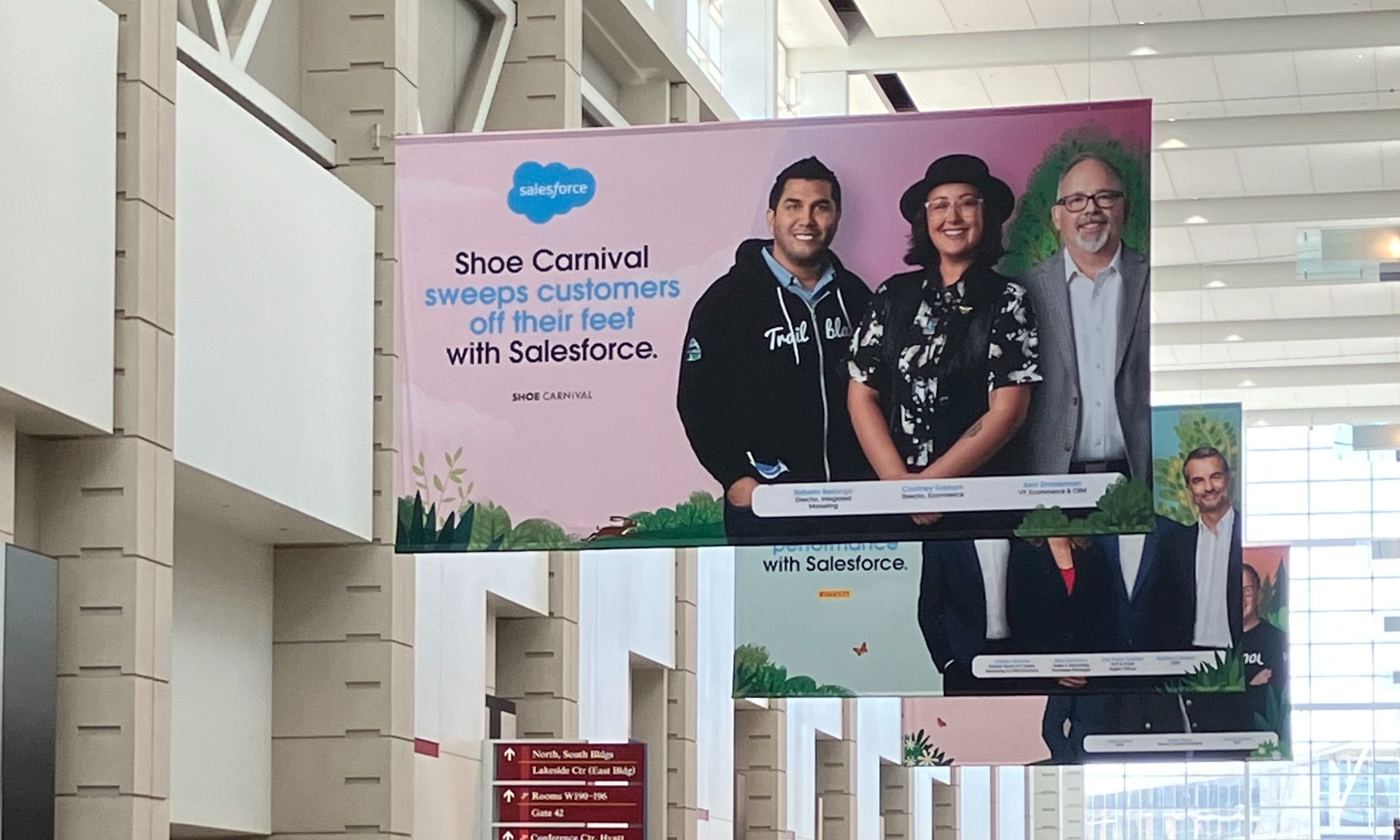
Salesforce launched a collection of new, generative AI-related products at Connections in Chicago this week. They included new Einstein Copilots for marketers and merchants and Einstein Personalization.
To better understand, not only the potential impact of the new products, but the evolving Salesforce architecture, we sat down with Bobby Jania, CMO, Marketing Cloud.
Dig deeper: Salesforce piles on the Einstein Copilots
Salesforce’s evolving architecture
It’s hard to deny that Salesforce likes coming up with new names for platforms and products (what happened to Customer 360?) and this can sometimes make the observer wonder if something is brand new, or old but with a brand new name. In particular, what exactly is Einstein 1 and how is it related to Salesforce Data Cloud?
“Data Cloud is built on the Einstein 1 platform,” Jania explained. “The Einstein 1 platform is our entire Salesforce platform and that includes products like Sales Cloud, Service Cloud — that it includes the original idea of Salesforce not just being in the cloud, but being multi-tenancy.”
Data Cloud — not an acquisition, of course — was built natively on that platform. It was the first product built on Hyperforce, Salesforce’s new cloud infrastructure architecture. “Since Data Cloud was on what we now call the Einstein 1 platform from Day One, it has always natively connected to, and been able to read anything in Sales Cloud, Service Cloud [and so on]. On top of that, we can now bring in, not only structured but unstructured data.”
That’s a significant progression from the position, several years ago, when Salesforce had stitched together a platform around various acquisitions (ExactTarget, for example) that didn’t necessarily talk to each other.
“At times, what we would do is have a kind of behind-the-scenes flow where data from one product could be moved into another product,” said Jania, “but in many of those cases the data would then be in both, whereas now the data is in Data Cloud. Tableau will run natively off Data Cloud; Commerce Cloud, Service Cloud, Marketing Cloud — they’re all going to the same operational customer profile.” They’re not copying the data from Data Cloud, Jania confirmed.
Another thing to know is tit’s possible for Salesforce customers to import their own datasets into Data Cloud. “We wanted to create a federated data model,” said Jania. “If you’re using Snowflake, for example, we more or less virtually sit on your data lake. The value we add is that we will look at all your data and help you form these operational customer profiles.”
Let’s learn more about Einstein Copilot
“Copilot means that I have an assistant with me in the tool where I need to be working that contextually knows what I am trying to do and helps me at every step of the process,” Jania said.
For marketers, this might begin with a campaign brief developed with Copilot’s assistance, the identification of an audience based on the brief, and then the development of email or other content. “What’s really cool is the idea of Einstein Studio where our customers will create actions [for Copilot] that we hadn’t even thought about.”
Here’s a key insight (back to nomenclature). We reported on Copilot for markets, Copilot for merchants, Copilot for shoppers. It turns out, however, that there is just one Copilot, Einstein Copilot, and these are use cases. “There’s just one Copilot, we just add these for a little clarity; we’re going to talk about marketing use cases, about shoppers’ use cases. These are actions for the marketing use cases we built out of the box; you can build your own.”
It’s surely going to take a little time for marketers to learn to work easily with Copilot. “There’s always time for adoption,” Jania agreed. “What is directly connected with this is, this is my ninth Connections and this one has the most hands-on training that I’ve seen since 2014 — and a lot of that is getting people using Data Cloud, using these tools rather than just being given a demo.”
What’s new about Einstein Personalization
Salesforce Einstein has been around since 2016 and many of the use cases seem to have involved personalization in various forms. What’s new?
“Einstein Personalization is a real-time decision engine and it’s going to choose next-best-action, next-best-offer. What is new is that it’s a service now that runs natively on top of Data Cloud.” A lot of real-time decision engines need their own set of data that might actually be a subset of data. “Einstein Personalization is going to look holistically at a customer and recommend a next-best-action that could be natively surfaced in Service Cloud, Sales Cloud or Marketing Cloud.”
Finally, trust
One feature of the presentations at Connections was the reassurance that, although public LLMs like ChatGPT could be selected for application to customer data, none of that data would be retained by the LLMs. Is this just a matter of written agreements? No, not just that, said Jania.
“In the Einstein Trust Layer, all of the data, when it connects to an LLM, runs through our gateway. If there was a prompt that had personally identifiable information — a credit card number, an email address — at a mimum, all that is stripped out. The LLMs do not store the output; we store the output for auditing back in Salesforce. Any output that comes back through our gateway is logged in our system; it runs through a toxicity model; and only at the end do we put PII data back into the answer. There are real pieces beyond a handshake that this data is safe.”
-
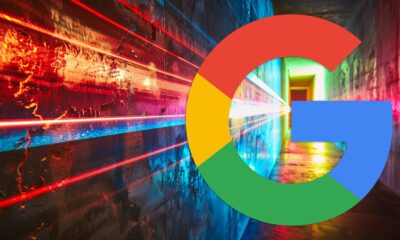
 SEARCHENGINES6 days ago
SEARCHENGINES6 days agoBillions Of Google goo.gl URLs To 404 In The Future
-
SEARCHENGINES5 days ago
Daily Search Forum Recap: July 22, 2024
-

 SEO6 days ago
SEO6 days ago11 Copyscape Alternatives To Check Plagiarism
-

 SEARCHENGINES7 days ago
SEARCHENGINES7 days agoGoogle Core Update Coming, Ranking Volatility, Bye Search Notes, AI Overviews, Ads & More
-

 SEO6 days ago
SEO6 days agoGoogle Warns Of Last Chance To Export Notes Search Data
-
SEARCHENGINES4 days ago
Daily Search Forum Recap: July 23, 2024
-
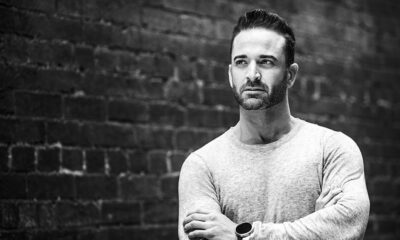
 AFFILIATE MARKETING6 days ago
AFFILIATE MARKETING6 days agoThe Top 5 AI Tools That Can Revolutionize Your Workflow and Boost Productivity
-

 SEO4 days ago
SEO4 days agoSystem Builders – How AI Changes The Work Of SEO


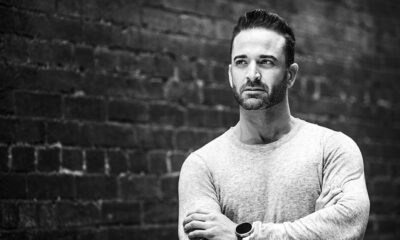

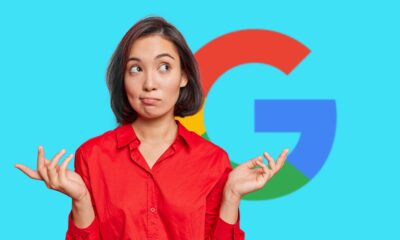











You must be logged in to post a comment Login